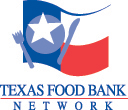 The link between poverty, hunger and poor school performance is well-documented, and sensible - how can children learn when their focus is on their stomachs?
The link between poverty, hunger and poor school performance is well-documented, and sensible - how can children learn when their focus is on their stomachs?A new statewide report highlighted in the El Paso and Fort Worth media shows how Texas schools must attend to the physical needs of under-performing children as well as their minds.
The number of El Paso children living in poverty between 2000 and 2005 increased from 34 percent to 40 percent, according to the El Paso Times. Only about 80 percent of these students passed the reading section of the Texas Assessment of Knowledge and Skills, or TAKS, test.
Similar trends hold in Fort Worth. "If lawmakers really want to improve the chances of educational success," opined the Star-Telegram, "they’ll have to be willing to invest more in healthcare, jobs and other support systems for Texas’ children and families."


 income, and can only watch as prices for food and other necessities rise around her. “My daughter in Houston said, ‘Come live with me,' but I'm used to being by myself,” she said. “I don't want to be a burden.”
income, and can only watch as prices for food and other necessities rise around her. “My daughter in Houston said, ‘Come live with me,' but I'm used to being by myself,” she said. “I don't want to be a burden.”

















.jpg)

 The line of cars snaking out from the
The line of cars snaking out from the  Food banks across the state are doing likewise, but these charities are finding that they can't manage alone. Thankfully, help is coming from both the private and public sector to stem this tide of need.
Food banks across the state are doing likewise, but these charities are finding that they can't manage alone. Thankfully, help is coming from both the private and public sector to stem this tide of need.

















